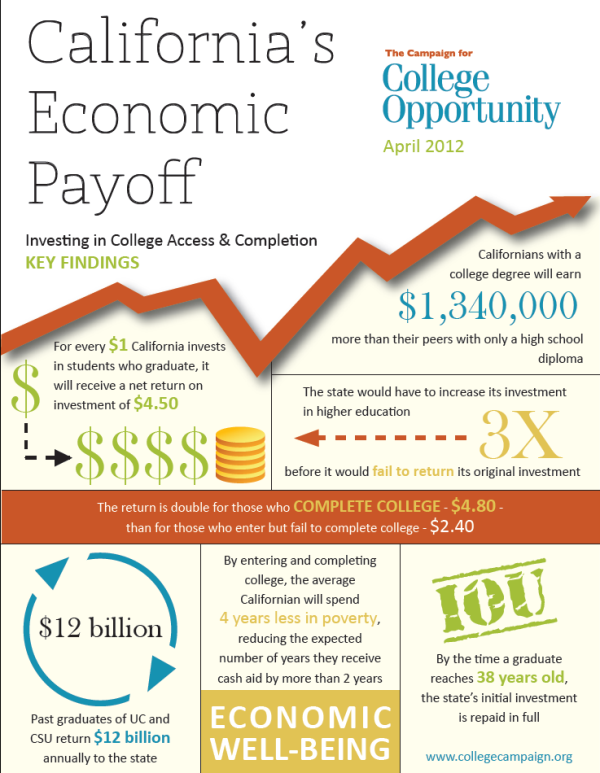 Is it worth it for California to invest in higher education? That’s the central question posed by a new report examining the state’s spending on its university system and how much graduates end up contributing back to the state budget. The answer? “A resounding yes,” said Michele Siqueiros, executive director of The Campaign for College Opportunity.
Is it worth it for California to invest in higher education? That’s the central question posed by a new report examining the state’s spending on its university system and how much graduates end up contributing back to the state budget. The answer? “A resounding yes,” said Michele Siqueiros, executive director of The Campaign for College Opportunity.
Released today, “California’s Economic Payoff: Investing in College Access & Completion” finds that for “every dollar California invests in students who go to college, it will receive a net return on investment of [$4.50].” Returns for college graduates were double those who went but dropped out before completing a degree. And for college graduates, the money spent by the state on their education is paid back, on average, by the time they’re 38 years old.
California’s higher education system has been hit with a slew of budget cuts totaling billions of dollars since the recession started. The state’s colleges and universities have raised tuition and eliminated entire degree programs. Although it never addresses the budget crisis explicitly, the report will help interested groups make the case for California to devote more funding to higher education.
The California Civil Rights Coalition, for one, plans on using the report in its advocacy, said statewide coordinator Claudia Pena. “To the extent that California invests in its future, we’ll see a reduction on poverty, incarceration and unemployment,” she said. “We actually cannot afford to deny this investment in education without continuing to increase the disparities in education.”
The return-on-investment that the report calculates is based in part on a projection of increased tax revenues for the Golden State. As students with some college experience or a college degree earn more money than high-school graduates and dropouts, they’ll contribute more in state taxes later on. The authors also point to the fact that those in college are far less likely to cost the state money down the line, as well, whether through welfare programs or incarceration.
The findings are particularly important due to California’s demographics, according to one of the report’s co-authors, Jon Stiles. The state’s two largest age groups are 15-19-year-olds and 20-24-year-olds. And, unlike the rest of the country, the majority of these individuals are Latino or black. “That means California is going to have to take the lead in solutions in dealing with this young population,” Stiles said.



